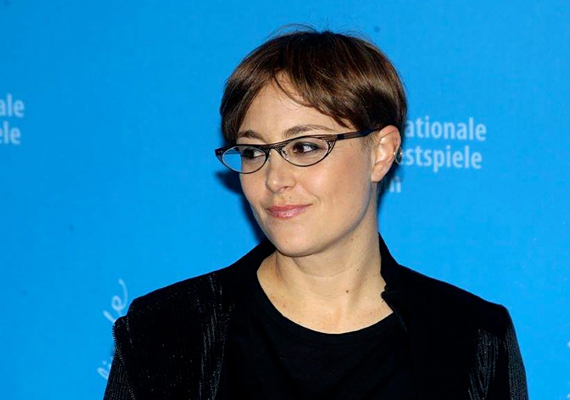Laura Bispuri • Director
“A frozen body that progressively defrosts”
- BERLIN 2015: The young Italian filmmaker Laura Bispuri talks about her first feature film, Sworn Virgin, unveiled in competition at Berlin

Accompanied by her actors Alba Rohrwacher, Flonja Kodheli and Lars Eidinger, and her producer Marta Donzelli, the young Italian director Laura Bispuri spoke to the international media about her first feature film, Sworn Virgin [+see also:
film review
trailer
Q&A: Laura Bispuri
film profile], which had its world premiere in competition at the 65th Berlinale.
Where did you discover this Albanian tradition of the “sworn virgin”?
Laura Bispuri: I read the novel three-and-a-half years ago, and that is when I decided to make the film. I developed a passion for Albania and its culture through several channels: meetings, seminars, music, researching anthropological studies on the “sworn virgin” tradition. Afterwards, I travelled there several times, to the mountains, and I think the film reflects the passion I have for that country. By no means at all do I want Albania to have a negative image and Italy a positive one. This is expressed by the film's characters, who can no longer live in Albania but still love that country. In terms of the “sworn virgin” tradition, it still exists. Clearly, it is fading away, but I feel that it is fading too slowly and women still have a long way to go before they have more “normal” rights.
How did you go about the narrative structure with this very particular chronology?
It was one of the biggest challenges of the film, and it needed a lot of work when writing the scenes and editing. I thought this narrative structure would favour the protagonist, who is complex and multi-layered; a linear structure would have been inadequate. I wanted to describe an inner voyage, and all of the scenes from the past are more than mere flashbacks: they are narrative episodes that re-transmit emotions to the present.
The body is a fundamental element in the film. What were your intentions in this regard?
It is the process of a frozen body that progressively defrosts, taking small steps in order to free itself. The story of a person who finally succeeds in being at ease with her body. What really mattered in terms of setting the scene was to imagine the place where someone who is suffocated in her own body has to go, someone who is going to transform a little bit every day in a swimming pool, surrounded by undressed bodies, even though they have bathing suits on.
Did you purposely expand this reflection on physical emancipation by choosing synchronised swimming?
Yes. For me this sport is a summary of the feminine image of our time, along with its limits. These girls swim while wearing a lot of make-up and they must be smiling. It takes on the female identity that is obliged to be beautiful and perfect. It is also an exhausting sport, and the fact that this tiredness happens underwater equally alludes to the way women carry on their lives in general. The water obviously has to do with the feminine aspect, but it also has a role in this idea of liberation. In my previous films, I often used this element, and I realised that I am instinctively allured to it.
How did you work with Alba Rohrwacher?
From the beginning, I felt that she was probably the only actress who was capable of playing this role, and the film proves that she was the right choice. We had what can be described as a symbiotic relationship. During the three years of preparation, we had reflected quite a lot on different versions of the screenplay, and together we looked for the different guidelines on using one’s body, on a character’s physical transformation, on subtle changes. We enjoyed investigating masculine body language and references. After that, everything was very simple, although we did keep on researching continually while filming. But everything was quite easy because Alba grasped the character of Mark right away and embodied her as I imagined.
How did the German actor Lars Eidinger get involved in the project?
At first, I looked in Italy, and the character had a different physique and a different age. But I couldn’t find anyone, and I decided to have a look at German actors. From the moment I met Lars Eidinger I was smitten. He came to Rome and we met with Alba, and I realised that they resembled one another. I therefore decided the film should go in the direction of that resemblance, and I re-wrote the character.
(Translated from French)
Did you enjoy reading this article? Please subscribe to our newsletter to receive more stories like this directly in your inbox.















